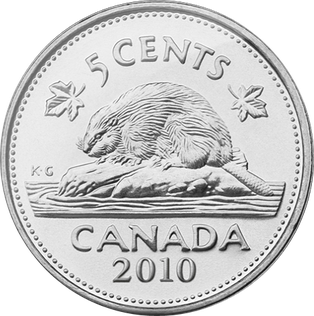22 March 2024
Nickel is a chemical element with atomic number 28 and the symbol Ni. It’s a hard, silvery-white, lustrous metal. It’s a common metal, but rarely found in pure form in nature. Nickel is widely used in all sorts of products, notably stainless steel, magnets, batteries, and as plating for a wide variety of objects.
Nickel alloys have been known since antiquity. By the eighteenth century, German miners were calling nickeline ore (nickel arsenide) Kupfernickel, literally copper-nickel. The Nickel in this case being the name of demon. The name is a hypocoristic form of Nicholas, as in the name Old Nick for Satan. The ore resembled copper ore, but mining it often resulted in miners suffering illness from the arsenic content, hence the demonic name. (Cf. pumpernickel and cobalt)
In 1751, Swedish chemist Axel Fredrik Cronstedt attempted to extract copper from Kupfernickel and ended up with nickel. He published his discovery that year, but did not coin the name nickel until a subsequent publication three years later:
Kupfer-Nickel år den malm, som har storsta halten af den forr bestresne och utgifne halfmetallen, hvaraf jag tagit mig anledning, at behålla samma namn for des regulus, eller for mera vighets skul, kalla honom Nickel.
(Kupfer-Nickel is the ore that has the greatest content of the previously stressed and released semi-metal, which is why I have taken the opportunity to keep the same name for its regulus, or for the sake of more dignity, call it Nickel.)
US and Canadian five-cent coins are called nickels because they are minted from a copper-nickel alloy (that’s actual copper, not Kupfernickel). The US nickel was introduced in 1866, with Thomas Jefferson's visage being placed on the obverse in 1938. Canadian nickel was introduced in 1922.
Sources:
Cronstedt, Axel F. “Fortsättning af rön och försök, Gjorde Med en Malm-art från Los Kobolt Grufvor” (16 February 1754). Kongl. Svenska Vetenskaps Academiens Handlingar, 15, 1754, 38–45 at 39. Biodiversity Heritage Library.
Miśkowiec, Pawel. “Name Game: The Naming History of the Chemical Elements—Part 1—From Antiquity till the End of 18th Century.” Foundations of Chemistry. 1 November 2022. DOI: 10.1007/s10698-022-09448-5.
Oxford English Dictionary, third edition, September 2003, s.v. nickel, n. and adj.; second edition, 1989, s.v. copper-nickel, n., kupfernickel, n.
Photo credit: Unknown photographer, c. 2010. Wikipedia. Public domain image.

